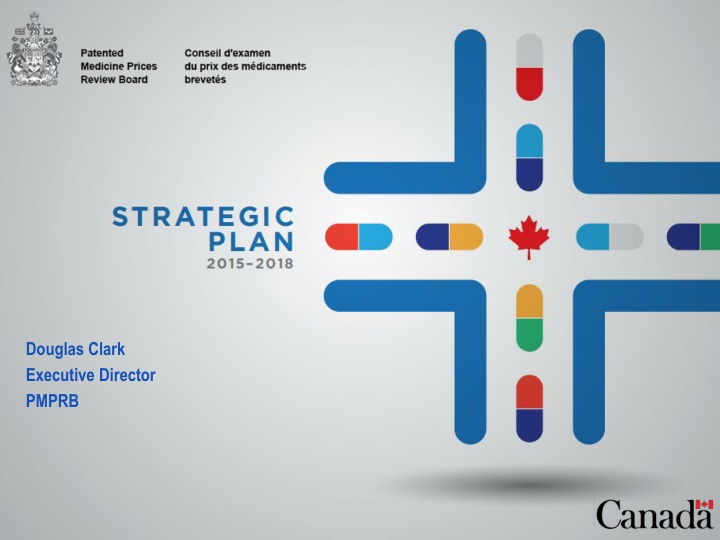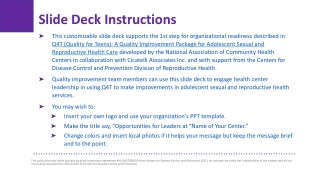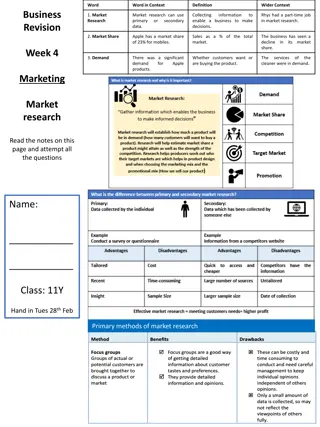
PMPRB Strategic Plan in Addressing Pharmaceutical Market Challenges
Learn about the Pharmaceutical Market Pricing Review Board's strategic plan to adapt to evolving market dynamics, consumer-focused regulation, modernization, and strategic partnerships. Explore the origins of the PMPRB, its impact on drug pricing, and the need for policy reform to balance healthcare costs and patient access to innovative treatments.
Uploaded on | 0 Views
Download Presentation

Please find below an Image/Link to download the presentation.
The content on the website is provided AS IS for your information and personal use only. It may not be sold, licensed, or shared on other websites without obtaining consent from the author. If you encounter any issues during the download, it is possible that the publisher has removed the file from their server.
You are allowed to download the files provided on this website for personal or commercial use, subject to the condition that they are used lawfully. All files are the property of their respective owners.
The content on the website is provided AS IS for your information and personal use only. It may not be sold, licensed, or shared on other websites without obtaining consent from the author.
E N D
Presentation Transcript
Douglas Clark Executive Director PMPRB
Why a Strategic Plan? Canada, like many countries, faces rising health care costs, as payers struggle to reconcile finite drug budgets with patient access to promising but costly new health technologies. The Canadian system is unique globally with a federal regulator tasked with policing abuses of patent-derived statutory monopolies but no mechanism to harness nationwide buying power. Increasingly, the effectiveness of the PMPRB in carrying out is regulatory role within the Canadian system is being questioned: The Panel has mixed views about the PMPRB . Canada s performance in managing drug prices has been weak. To make matters worse, commitments by industry to increase investment in research and development have not been met. As collective purchasing of drugs expands across public plans, and eventually to private plans, the PMPRB s role may be further diminished. Report of the Advisory Panel on Healthcare Innovation (2015) It is clear that the PMPRB needs to adapt to a rapidly evolving pharmaceutical marketplace but how exactly? 2
Strategic Objectives The PMPRB s year-long strategic planning process has culminated in a new vision and a revised mission statement, along with the following strategic objectives: Strategic objective 1: consumer-focused regulation and reporting Strategic objective 2: framework modernization Strategic objective 3: strategic partnerships and public awareness 3
Origins of the PMPRB Canada enacted a two-fold reform of its drug patent regime in 1987 (Bill C-22) that sought to balance competing industrial and social policy objectives: Strengthen patent protection for drug manufacturers to incentivize R&D Mitigate the financial impact of stronger pharmaceutical patent protection on payers The PMPRB was conceived as C-22 s consumer protection pillar , to ensure patentees do not abuse their newfound statutory monopolies by charging excessive prices. The intent was to double R&D in Canada (to 10% of revenues) while keeping prices in line with high R&D countries (the PMPRB-7 *) in order to pay our fair share . * The US, the UK, Germany, Switzerland, Sweden, France and Italy. 4
Impact of Policy Prices are high and R&D is low Although Canadian patented drug prices, on average, remain slightly below the median of the PMPRB7, this is because high US prices skew the median. Prices in France, Italy and the UK are 13-25% less than Canadian prices; Sweden and Switzerland are 3-4% less. Prices in Australia, Spain, the Netherlands and New Zealand are 14-34% less. In 2005 only France and Italy had lower patented drug prices than Canada (among our comparators), today only Germany and the USA are higher. Conversely, R&D continues to decline, to 4.4% of revenues from sales of patented medicines in Canada for all patentees (5.0% for Rx&D members) a fraction of the 21.8% average in the PMPRB7. 5
Prices are high Average Foreign-to-Canadian price ratios paint a clear picture (Patented Drugs, 2014) 2.50 2.21 2.00 1.50 1.04 1.04 1.00 0.98 0.96 0.90 0.87 0.86 0.82 0.80 1.00 0.78 0.77 0.74 0.74 0.73 0.73 0.72 0.72 0.72 0.69 0.68 0.66 0.66 0.66 0.64 0.64 0.61 0.60 0.58 0.46 0.33 0.50 0.00 USA Australia Greece Sweden Slovakia Canada Austria Luxembourg Hungary Portugal Poland Italy Turkey Finland Median - OECD Estonia Mexico France Belgium Great Britain Germany New Zealand Spain Czech Republic Switzerland Japan Chile Ireland Netherlands Slovenia Norway South Korea Source: IMS MIDAS database, 2005-2014, IMS AG. 6
R&D is Low R&D-to-Sales ratios are even less favorable By 2012, R&D had increased in Germany, the USA, Switzerland and on average but collapsed in Canada. 120% In 2000, Canadian R&D was at its 10% target, but only half the PMPRB7 average. 117.7% 120% 102.5% 100% 100% 80% 80% 60% 60% 44.4% 35.1% 40% 40% 34.5% 26.8% 22.0% 21.8% 21.0% 20.4% 18.4% 17.3% 16.8% 16.1% 20% 20% 10.1% 6.2% 6.1% 5.3% 0% 0% Italy Canada FranceGermany USA Mean UK Sweden Switz. Canada Italy France USA Mean GermanySweden UK Switz. 2000 2012 7
Whats Changed? International reform to pricing and reimbursement regimes In 1987, price referencing was in its infancy, today, although it is widely practiced, it is increasingly an adjunct to other forms of price/cost control. From 2010-2014 period, 23 European countries began planning or executed a major reform of their pharmaceutical price and cost regulatory framework. Country UK Year 2014 Type of Reform Annual, per company, public expenditure ceilings 0% growth for next two years. Sweden 2014 7.5% price reduction for drugs >15 years old not subject to generic competition. Switz. 2013 Legislated negotiated price reduction of 2500 drugs. Italy 2013 Expenditure ceiling, performance based reimbursement, 2-year price re-evaluation. France 2012 Mandatory price review every 5 years, reimbursement rates cut for low innovation medicines, new stringent therapeutic evaluations. Germany 2011 Consolidation of regulatory roles, mandatory rebates to public plans. 8
Whats Changed? High cost drugs The era of mass-marketed blockbuster drugs is ending, as business models shift towards high cost specialty drugs at prices even the most well-funded payers struggle to pay. Segment Specific Spending Growth 2014 Total market 4.4% Total Brands 5.6% Biologics 10.4% Brands Excluding Biologics 3.4% Oncology 12.3% Generics 0.6% 0% 2% 4% 6% 8% 10% 12% 14% Year-over-Year Spending Growth Rate 2014 Source: IMS Brogan. Canadian Drug Stores and Hospitals Purchases, MAT December 2014 9
Whats Changed? Cost Drivers Net growth in spending has been low recently because of the pull effects of generic substitution and generic price reductions. The cost drivers behind push effects are growing and posing an increased challenge. Product Launch Revenues (2007-2014) Spending on New Active Substances 350 12 Spending per Product (million C$) 300 10 (million C$) 250 8 200 6 150 4 100 2 50 0 0 2007 2008 2009 2010 2011 2012 2013 2014 Total Spending Per Product Launched Source: IMS Brogan. Canadian Drug Stores and Hospitals Purchases, MAT December 2014 10
Whats Changed? Provincial joint price negotiations Provinces and territories have been able to improve their negotiating positions through the pCPA. As of October, Quebec has formally joined the pCPA for both brand and generic products. 82 joint negotiations on brand drugs have been completed at last count. To date, joint negotiations on brand name drugs and generic price reductions have resulted in more than $500 million in annual savings for public plans. For first time ever, a collection of provinces is intervening in excessive price hearing before the PMPRB. Source: CIHI (2014) 11
Whats Changed? International price referencing + non-transparent pricing = market segmentation and price discrimination To preserve the ability to price discriminate in a global market where price referencing is widespread, manufacturers began negotiating confidential discounts/rebates. Savings from the pCPA currently benefit less than 35% of the market, and publicly insured consumers co-payments are based on list prices (not the confidential, rebated price). Competition law concerns have so far prevented private insurers, responsible for the same portion of the market as provinces, from joint negotiation or purchasing. Uninsured Canadians have no negotiating power and pay the highest (i.e., list) prices. Payer Share of drug costs 42% 35% 23% Public insurance Private insurance Out-of-pocket (deductible, co- pay + uninsured) 12
Whats Changed? Debate over pharmacare Pharmacare has once again emerged as an important public debate, recent studies have estimated total public and private savings ranging from $3 to $11 billion. 13
Implications for the PMPRB Since the PMPRB s price ceilings are based on public list prices, rather than the price net of confidential rebates and discounts, on average, patented drug prices are 20% below our price ceilings. As a result, patentees have considerable latitude to price discriminate between different market segments. The PMPRB s guidelines do not place any particular emphasis on high-cost specialty drugs even though these are the products that tend to have few if any competitors and are arguably at greatest risk of abuse of market power. Despite its consumer protection origins, the reality is that the PMPRB s current framework offers very little protection to those Canadians who are least able to pay, as well as to public and private insurers in circumstances where they have little to no countervailing power. In light of the above, and with the recent coupling of high prices and record low R&D, many are questioning the effectiveness of the PMPRB in meeting its original policy objectives. A new approach is needed. 14
Vision and Mission Vision A sustainable pharmaceutical system where payers have the information they need to make smart reimbursement choices and Canadians have access to patented drugs at affordable prices. Mission We are a respected public agency that makes a unique and valued contribution to sustainable spending on pharmaceuticals in Canada by: Providing stakeholders with price, cost and utilization information to help them make timely and knowledgeable drug pricing, purchasing and reimbursement decisions Acting as an effective check on the patents rights of pharmaceutical manufacturers through the responsible and efficient use of its consumer protection powers. 15
Strategic Objective 1 Consumer-focused regulation and reporting If the PMPRB is to remain true to the original intent of Bill C-22 to be the consumer protection pillar of the policy at a time when patented drug prices are outpacing those in the PMPRB7 and other European countries, R&D is at a record low, and payers are struggling to cope with an influx of high cost drugs, it must adopt a more consumer-centric approach to how it carries out its regulatory and reporting functions. 16 16
Strategic Objective 2 Framework modernization The Canadian regime has remained essentially unchanged since 1987, while other countries have undergone significant reform. In this light, the PMPRB will examine whether and to what extent changes to its regulatory mandate are warranted to ensure that Canadians pay a fair share for patented drugs. This entails examining options to modernize and simplify Board guidelines, but also engaging with and assisting federal, provincial and territorial partners in any future discussions on broader reform. 17 17
Strategic Objective 3 Strategic partnerships and public awareness If the PMPRB is to succeed in its modernization efforts, it must engage with a network of pharmaceutical sector stakeholders. We will intensify its partnership with public payers to provide timely and relevant market intelligence. We will expand the scope of pharmaceutical topics on which we report to provide consumers with information to help them make more cost effective choices. We will work closely with international counterparts in sharing knowledge. We will adopt a more proactive approach to communicating with the general public. 18 18
Liberal Platform A Liberal government s priorities for a new Health Accord will include: Improving access and reducing the cost of prescription medications. We will improve access to necessary prescription medications. We will join provincial and territorial governments to negotiate better prices for prescription medications and to buy them in bulk reducing the cost governments pay to purchase drugs . We will consult with industry and review the rules used by the Patented Medicine Prices Review Board to ensure value for the money governments and individual Canadians spend on brand name drugs. https://www.liberal.ca/realchange/investing-in-health-and-home-care 19 19
Questions? asdf 20






















